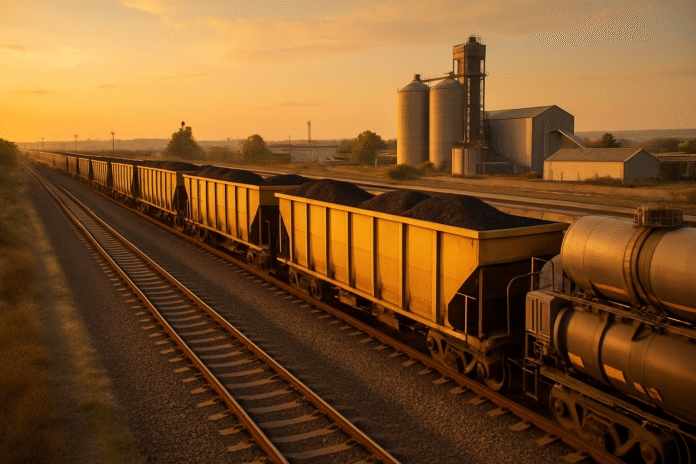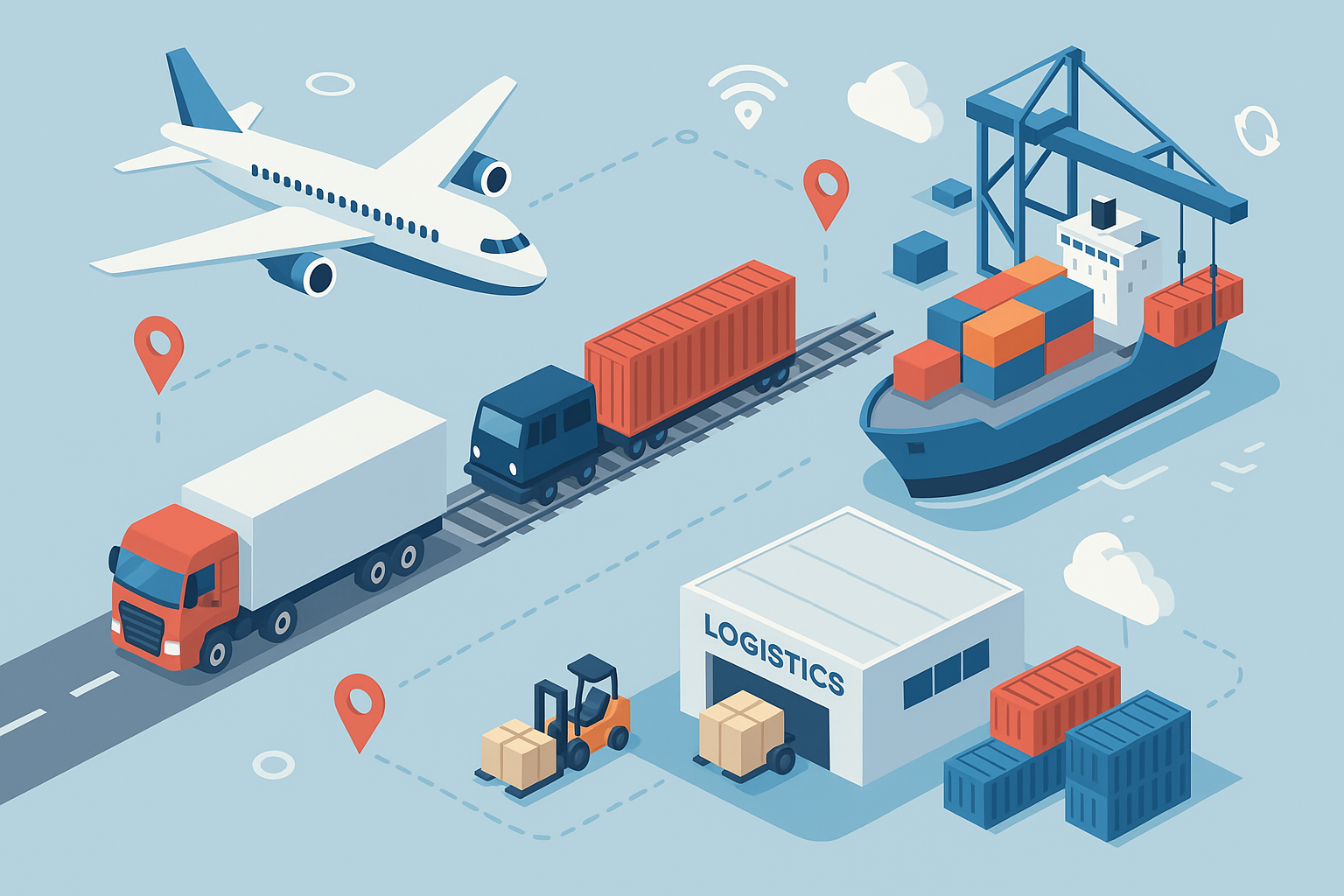Efficient bulk shipping is the backbone of industrial supply chains, especially for raw materials such as coal, minerals, grain, chemicals, and petroleum products. Among the various modes of transportation, rail transport stands out as a reliable, cost-effective, and sustainable method for moving large quantities of bulk goods across land.
In this blog, we’ll explore the critical role of rail transport in bulk shipping, understand its advantages, how it integrates into multimodal logistics, and why it remains indispensable for industries that deal in high-volume cargo.
What is Bulk Shipping?
Before diving into rail transport, it’s essential to understand what bulk shipping means.
Bulk shipping refers to the transportation of unpackaged bulk cargo in large quantities. These materials are typically loaded directly into train wagons, ships, or trucks without packaging. There are two main types:
- Dry bulk: Includes materials like coal, iron ore, grain, sand, and cement.
- Liquid bulk: Includes oil, chemicals, and other liquids.
The nature of these goods demands transport systems that can handle large volumes efficiently—and this is where rail transport excels.
Why Rail Transport is Ideal for Bulk Shipping
Rail transport has been an integral part of bulk logistics for over a century. Even with the rise of road freight and air cargo, rail continues to be one of the most cost-efficient and environmentally sustainable methods for inland transportation of bulk cargo.
1. High Load Capacity
Railcars can carry significantly more weight than trucks. A single freight train can haul the equivalent of several hundred trucks in one trip, reducing the number of journeys required to move the same volume of goods.
2. Cost Efficiency
Transporting goods via rail is cheaper over long distances, especially when compared to road transport. Once the rail infrastructure is in place, operating costs are relatively low. This makes it especially beneficial for industries like mining, agriculture, and energy.
3. Energy Efficiency and Sustainability
Railways are much more fuel-efficient than trucks. According to industry studies, trains can move one ton of freight over 470 miles on a single gallon of fuel. Additionally, the reduced carbon emissions make rail an environmentally friendly choice for businesses aiming to meet ESG (Environmental, Social, and Governance) goals.
4. Safety and Reliability
Rail networks are less affected by weather, traffic congestion, or driver fatigue. This makes them more reliable, with fewer delays and accidents compared to road transport.
How Bulk Cargo is Moved by Rail
The transportation of bulk goods via rail involves specialized freight cars, each designed to handle specific types of cargo:
| Railcar Type | Used For |
| Hopper Cars | Coal, grain, cement (dry bulk) |
| Tank Cars | Petroleum, chemicals, liquid cargo |
| Gondola Cars | Scrap metal, steel, ore, timber |
| Covered Hoppers | Grain, fertilizer (moisture-sensitive) |
Bulk cargo is typically loaded at production or mining sites and transported directly to processing plants, distribution hubs, or seaports for export. In many countries, dedicated freight corridors or rail loops are constructed specifically to optimize this flow.
The Role of Rail in Multimodal Bulk Transport
Modern supply chains rarely rely on a single transport method. Instead, they use multimodal logistics, combining rail, road, and sea to optimize costs and speed.
Example:
- Iron ore mined in a remote region is loaded into hopper cars.
- It is transported by rail to a coastal port.
- From there, it’s transferred onto bulk cargo ships for international delivery.
In this chain, rail acts as the inland bridge, connecting production centers to global trade routes. This seamless integration makes rail essential for ensuring timely and cost-effective bulk shipping.
Real-World Examples of Rail in Bulk Shipping
1. India’s Freight Corridors
The Dedicated Freight Corridors (DFC) being developed in India aim to revolutionize bulk transport. These are high-capacity rail networks specifically built for moving coal, cement, food grains, and containers.
- Eastern DFC moves coal from mines to power plants.
- Western DFC supports the movement of cement, fertilizer, and industrial goods.
These corridors reduce congestion, improve delivery timelines, and lower logistics costs.
2. US Grain Transport
In the United States, railroads move 70-75% of all grain exports to domestic ports. Covered hopper cars ensure the grain stays dry and fresh, making rail a vital link between Midwestern farms and global markets.
3. Australian Iron Ore Trains
Australia operates some of the longest and heaviest trains in the world to move iron ore from mines in the Pilbara region to ports. These trains stretch over 2.5 kilometers and carry more than 30,000 tons per trip.
Challenges in Rail-Based Bulk Shipping
Despite its advantages, rail transport for bulk cargo is not without limitations:
- Infrastructure Limitations: Many regions lack adequate rail infrastructure, especially in developing countries. Without proper terminals, sidings, and rail lines, it’s hard to integrate rail effectively into supply chains.
- Initial Investment: Building or upgrading rail lines, purchasing rolling stock, and developing loading terminals require significant capital investment, which may not be feasible for all companies.
- Lack of Flexibility: Unlike trucks, trains can’t go door-to-door. They need fixed routes and loading/unloading stations, which may require last-mile delivery by road.
- Scheduling & Coordination: Rail networks must be carefully managed to avoid congestion and delays. Poor scheduling can lead to bottlenecks, especially in regions with shared passenger and freight lines.
Future of Rail Transport in Bulk Shipping
The rail industry is undergoing rapid modernization to better serve bulk logistics needs. Innovations include:
- Electrification of freight trains for zero-emission transport.
- Automated loading/unloading systems at terminals.
- GPS tracking and real-time data for better fleet management.
- Double-stack container trains to maximize capacity on select routes.
Governments and logistics companies are also investing in public-private partnerships to expand and upgrade rail networks.
Conclusion
Rail transport plays a critical and irreplaceable role in bulk shipping by providing a scalable, cost-efficient, and environmentally sustainable method to move large quantities of goods over land. Whether it’s iron ore in Australia, grain in the US, or coal in India, railways are essential for connecting remote production centers to global supply chains.
As infrastructure improves and sustainability becomes a bigger focus, rail transport is poised to become even more prominent in the future of bulk logistics.
Key Takeaways
- Rail transport is ideal for moving large volumes of dry and liquid bulk cargo.
- It offers cost efficiency, high load capacity, energy savings, and reliability.
- It is an essential link in multimodal supply chains for bulk goods.
- Real-world examples from India, the US, and Australia demonstrate its scale.
- Investments in rail infrastructure and technology are shaping the future of bulk shipping.




